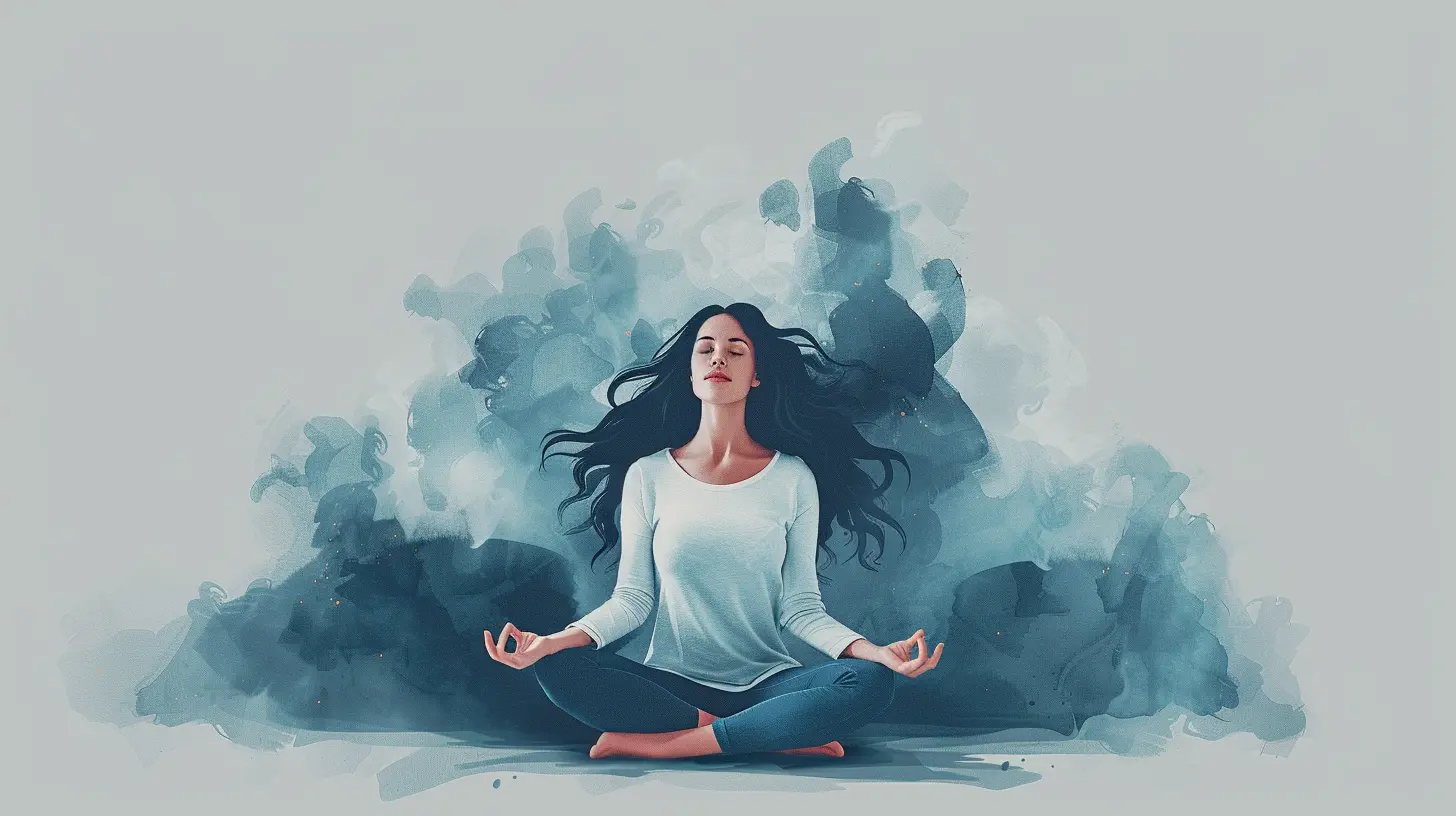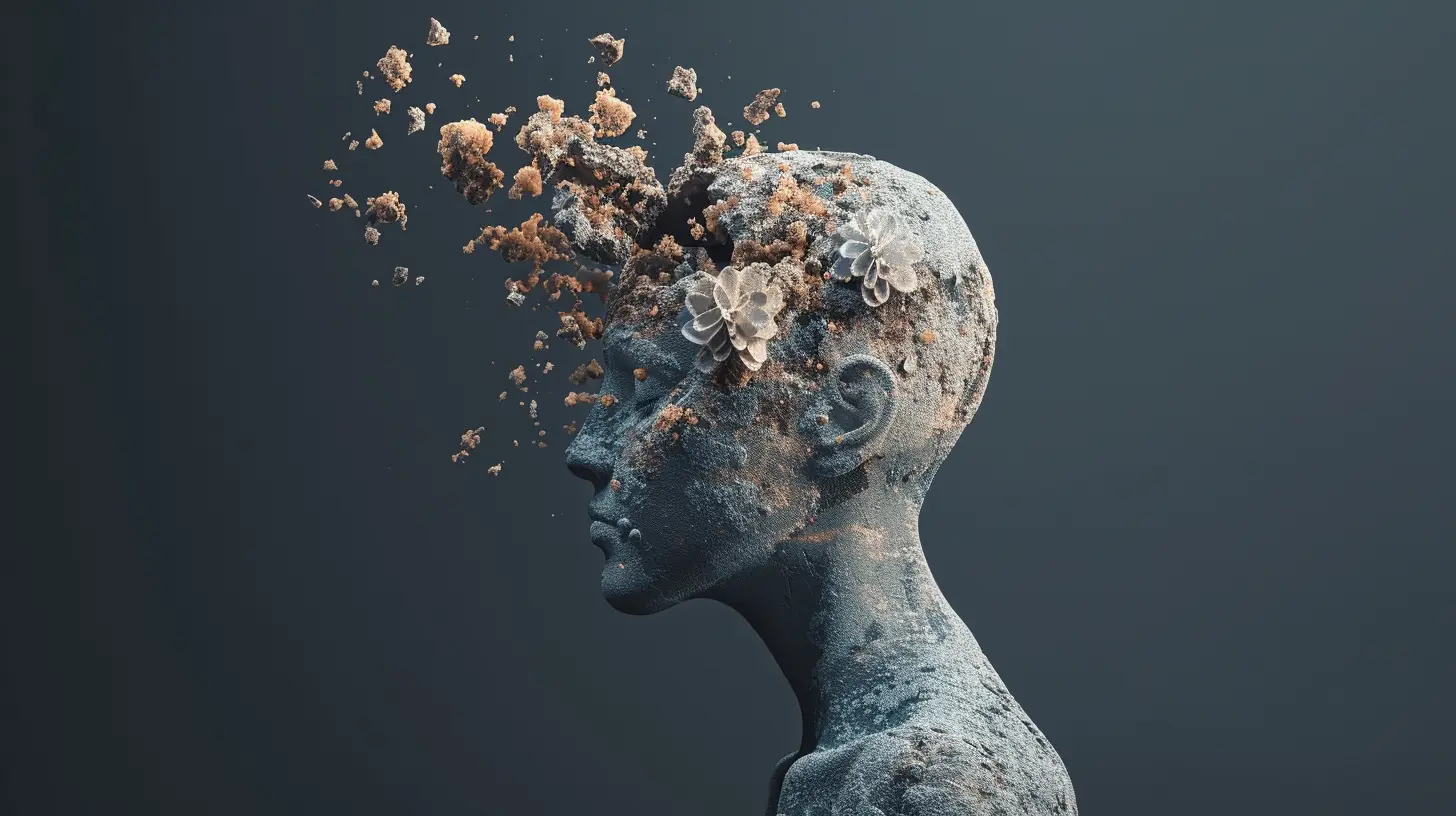How Mindfulness Practices Can Help Manage Anxiety Disorders
10 October 2025
Anxiety can feel like a whirlwind, right? Racing thoughts, a pounding heart, trouble focusing, and that nagging sense that something’s about to go horribly wrong—even when everything seems fine. If this sounds familiar, you’re not alone. Millions of people struggle with anxiety disorders every day. The good news? There’s a powerful, natural tool that’s gaining real traction in the mental health world. It’s called mindfulness.
So, what exactly is mindfulness, and how can it help ease the weight of anxiety? Stick around, because we’re about to dive deep into how mindfulness practices can help manage anxiety disorders—and maybe even brighten your mental space more than you imagined.
What Is Mindfulness, Anyway?
Let’s start with the basics. Mindfulness is all about being present—fully aware of where you are, what you're doing, and how you're feeling, without getting overwhelmed or overly reactive.Sounds simple, right? But think about how often your mind is somewhere else. Maybe you’re worrying about the future, rehashing something awkward you said yesterday, or mentally drafting your to-do list while eating lunch. That mental time travel is where anxiety thrives.
Mindfulness pulls you back to the now.
Anxiety and the Monkey Mind
Picture your thoughts like a monkey swinging from tree to tree—restlessly jumping from one worry to the next. That’s what many of us experience when we’re anxious. Our minds become noisy, wild, and hard to settle.Mindfulness acts like a gentle whisper that says, "Hey, come back here.” It slows down that monkey and teaches it to chill on one branch for a while. When practiced regularly, mindfulness can become a powerful way to manage—and even reduce—anxiety.
How Does Mindfulness Help with Anxiety?
Great question. Here’s what mindfulness does in the context of anxiety disorders:1. Shifts Your Focus from Fear to the Present
Anxiety is often rooted in fear of what might happen. Mindfulness redirects your attention to what's happening right now. You can’t be fully present and anxious about the future at the same time—it’s like trying to watch two movies at once.When you bring your focus to your breath, your body, or your immediate surroundings, you take power away from fearful thoughts.
2. Helps You Respond Instead of React
Ever snapped at someone and later thought, "Why did I do that?" Anxiety can make us reactive. Mindfulness gives you space between the trigger and your response. That space can make all the difference.You don’t have to silence your anxious thoughts—you just learn not to be dragged around by them.
3. Reduces Rumination (That Mental Hamster Wheel)
Rumination is a fancy word for overthinking. You know, those endless mental loops of “what if?” Mindfulness helps you notice when you’re slipping into those spirals and gently guides you away from them.Instead of feeding anxiety, you learn to observe your thoughts without judgment. Think of it like watching clouds pass by instead of chasing them down.
4. Enhances Emotional Regulation
Practicing mindfulness changes the way your brain handles emotions. Areas like the amygdala (the brain’s fear center) become less reactive, while areas responsible for regulation and calm become more active.In short? You literally train your brain to stay cool under pressure.
Different Mindfulness Practices That Help with Anxiety
Don’t worry—you don’t have to sit cross-legged on a mountain to practice mindfulness. There are many ways to weave it into your day without adding to your stress. Here are some go-to techniques:1. Mindful Breathing
This is the bread and butter of mindfulness. Just paying attention to your breath—how it feels going in and out—can anchor you to the moment.Try this: Close your eyes and take a deep breath in for 4 seconds, hold for 4 seconds, then exhale for 4. Repeat a few times. Notice how your body almost instantly begins to relax.
2. Body Scan Meditation
This one’s perfect for those who feel disconnected from their bodies. Lie down or sit comfortably. Slowly bring your attention to each part of your body, starting at your toes and working upward. Notice sensations without judging them.It's like giving your body a little mental check-up, helping you reconnect and reset.
3. Walking Meditation
Not a fan of sitting still? Try a walking meditation. As you walk, focus on how your feet feel hitting the ground, the rhythm of your steps, or the sounds around you. It turns a simple walk into a grounding activity.4. Mindful Journaling
Sometimes, writing things down brings clarity. Try journaling your thoughts with a mindful twist. Rather than analyzing or judging them, just notice what’s coming up. Let the words flow like a stream—no filters.5. Mindful Eating
How often do we eat while scrolling, watching Netflix, or working? Mindful eating is about savoring each bite, noticing the taste, texture, and how your body feels. It can reduce stress, help digestion, and bring you back to the present moment.What Does the Science Say?
Still skeptical? Let's bring in the facts. Research has repeatedly shown that mindfulness-based interventions can significantly reduce symptoms of anxiety.- A 2014 meta-analysis from Johns Hopkins University found that mindfulness meditation can lead to moderate reductions in anxiety symptoms, rivaling what you might see with antidepressant medication.
- Mindfulness-Based Stress Reduction (MBSR), an 8-week program developed by Jon Kabat-Zinn, has been shown to help people with generalized anxiety disorder and panic attacks regain control.
- Functional MRI scans show that regular mindfulness meditation can shrink the amygdala while growing the prefrontal cortex—this means less fear, more rational thinking.
Bottom line? Science has your back—mindfulness isn’t just fluffy wellness stuff.
Incorporating Mindfulness into Everyday Life
Okay, so you’re sold on mindfulness. But you’re busy (who isn’t?). How do you actually make it part of your daily life?Start Small
Don’t try to overhaul your whole routine. Start with five minutes a day—maybe right after you wake up or before bed. Consistency beats intensity every time.Use Cues
Tie mindfulness into things you already do. Brushing your teeth? Focus on the sensation and movement. Waiting in line? Feel your feet on the ground and take a few deep breaths.Apps and Guided Meditations
There are some amazing apps out there like Headspace, Calm, and Insight Timer. They offer guided meditations that can walk you through mindfulness practices, even if you’ve never tried them before.Make It a Ritual
Whether it’s with tea, candles, or music, creating a small mindfulness ritual can signal to your brain, “It’s time to slow down.” Rituals add meaning and make the habit stick.When Mindfulness Isn’t Enough
Let’s be real—mindfulness is powerful, but it’s not a magic cure-all. If your anxiety is intense, ongoing, or interfering with your daily life, professional help is essential.Therapies like Cognitive Behavioral Therapy (CBT) or medication can work wonders alongside mindfulness practices. Think of mindfulness as a complementary tool—not the only one in your toolbox.
A Final Word (From Someone Who's Been There)
Here’s the thing—mindfulness isn’t about eliminating anxiety. It's about changing your relationship with it. Imagine anxiety is like a storm, and mindfulness is the umbrella that helps you walk through it without getting drenched.You might still feel the wind and hear the thunder, but you’re not helpless. Staying grounded in the present gives you strength, stability, and peace—even when anxiety shows up uninvited.
So the next time your mind starts spinning, take a deep breath and come back to now. You’ve got this.
all images in this post were generated using AI tools
Category:
Psychological DisordersAuthor:

Ember Forbes
Discussion
rate this article
1 comments
Etta McNeal
Thank you for shedding light on the powerful connection between mindfulness and anxiety. Your insights offer hope and practical tools for those seeking peace amidst the challenges of anxiety disorders.
October 28, 2025 at 6:04 AM

Ember Forbes
Thank you for your kind words! I'm glad you found the insights helpful in navigating anxiety.


